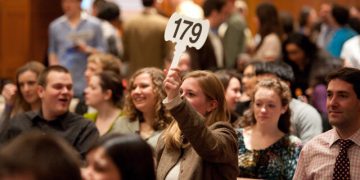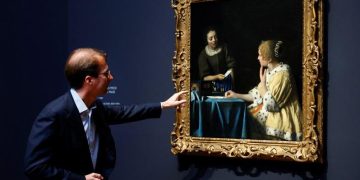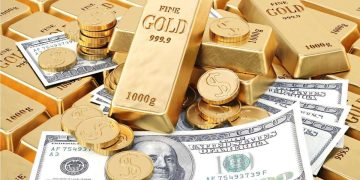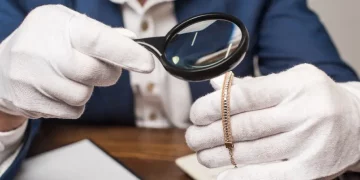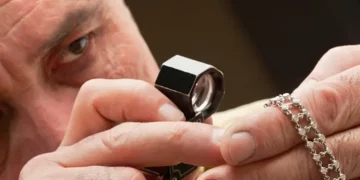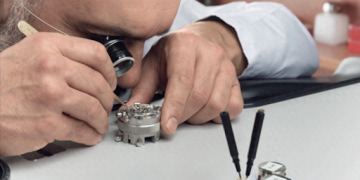Introduction
The world of auctions, particularly for high-value collectibles like rare coins, art, and vintage items, is both thrilling and complex. Whether you’re a seasoned collector or a first-time bidder, knowing the key trends and market behaviors leading up to an auction is essential for crafting a winning bidding strategy. In the fast-paced world of auctions, where prices can escalate in a matter of seconds, understanding what is driving the demand for a particular item or category can make all the difference between securing your desired piece and walking away empty-handed.
In this article, we will explore how you can use pre-auction trends to enhance your bidding strategy, giving you an edge in competitive bidding environments. From analyzing market trends and expert predictions to understanding psychological factors, we’ll show you how to use this knowledge to your advantage.
1. Analyze Historical Data and Market Trends
One of the most powerful tools you can use to inform your bidding strategy is historical data. Auction houses often provide detailed records of past sales, including the final hammer prices of similar items. By studying these records, you can get a sense of how certain types of items have performed in previous auctions, and use this knowledge to set your bidding limit.
Key Points:
- Price Trends: Look at the sales history of similar items, including the overall trends in the category. Are prices for certain types of collectibles or works of art increasing or decreasing over time? For example, if a specific genre of art or a particular coin has seen an upward trend, it might be an indication that demand is on the rise.
- Seasonal Patterns: The auction world has seasonal trends that can affect prices. For instance, art auctions held during major art weeks, like those in New York or London, often see inflated prices due to the increased attention and more collectors in attendance. Understanding these patterns can help you plan the best time to place your bids.
- Comparative Market Analysis: If you’re bidding on a rare coin or antique, comparing its estimated value with similar items that have been auctioned in the past will give you a realistic idea of what the item might sell for. Keep in mind that limited-edition items, items with exceptional provenance, or pieces with cultural or historical significance often fetch higher prices.
2. Monitor Auction House Insights and Expert Predictions
Auction houses and experts are often at the forefront of market trends. They work with collectors, investors, and appraisers to estimate the value of an item, and they regularly release auction previews, catalogs, and press releases that offer insight into anticipated bidding trends. This information can provide valuable clues to guide your bidding strategy.
Key Points:
- Auction Previews and Catalogs: Thoroughly review the auction house’s catalog, which often includes detailed descriptions of each item, its provenance, and any relevant market information. Look for expert commentary and valuation estimates, which can give you a clearer understanding of how auction house specialists expect an item to perform.
- Expert Predictions: Many auction houses issue predictions or “in-house estimates” on what they expect certain items to fetch. While these estimates are not guaranteed, they can provide a valuable benchmark for setting your bid limits. Auction houses often base these estimates on the expertise of their specialists, combined with historical sales data and current market conditions.
- Bidding Forecasts: Some auction houses even provide forecasts on bidding intensity, based on the attention certain items are getting in the lead-up to the auction. If an item is getting a lot of media attention or interest from high-profile collectors, it may be an indicator that the bidding will be more competitive, potentially pushing the price higher.
3. Understand the Auction’s Seller and Buyer Demographics
Each auction has its own unique audience, including both sellers and buyers. The demographic of both groups can significantly influence bidding behavior. Understanding the types of buyers attending the auction, whether they are seasoned investors, first-time bidders, or passionate collectors, can give you insights into the level of competition you can expect.
Key Points:
- Type of Auction: Auctions can vary in terms of the types of buyers they attract. A specialized auction, such as one focusing on vintage cars or fine art, may attract experienced collectors who are willing to pay top dollar for rare items. On the other hand, a general auction may have more casual bidders, and the competition may not be as fierce, but prices might be lower due to less specialized knowledge.
- Seller’s Reputation and Provenance: The provenance and reputation of the seller also play an important role in an auction’s appeal. Items with a strong historical background or celebrity association tend to attract a wider range of bidders. For example, art by well-known contemporary artists or a rare coin with a proven historical significance will naturally bring in a more affluent crowd, increasing the competition.
- Buyer Pool: Knowing whether the auction is likely to attract international bidders or a more localized crowd can help you set your bid strategy. Online auctions, for example, attract a broader and more diverse group of buyers from around the world, whereas in-person auctions may have a more regionally concentrated audience.
4. Use Psychology to Your Advantage
Bidding wars in auctions are often fueled by psychological factors. Understanding the psychology of bidding—both your own and that of other participants—can be a powerful tool in helping you manage the process effectively. Auction houses are designed to trigger emotional responses, and understanding how to control these impulses will improve your chances of success.
Key Points:
- The Fear of Missing Out (FOMO): One of the most powerful psychological forces in auction bidding is the fear of missing out. As the bidding heats up, many participants feel pressured to keep bidding, even if they’ve reached their budget. Recognize when you are falling into this trap and set firm limits before entering the auction.
- The Power of the First Bid: In some cases, being the first to place a bid can give you a psychological advantage. Starting the bidding can make you seem more committed, and can sometimes scare off other bidders who might otherwise feel hesitant.
- Psychological Pricing: Pay attention to bidding increments. If the auction starts nearing a psychological price point—such as a round number (e.g., $100,000 or $500,000)—it’s often where the competition intensifies. This is a critical moment in the auction, where you need to decide whether to raise your bid or let it go.
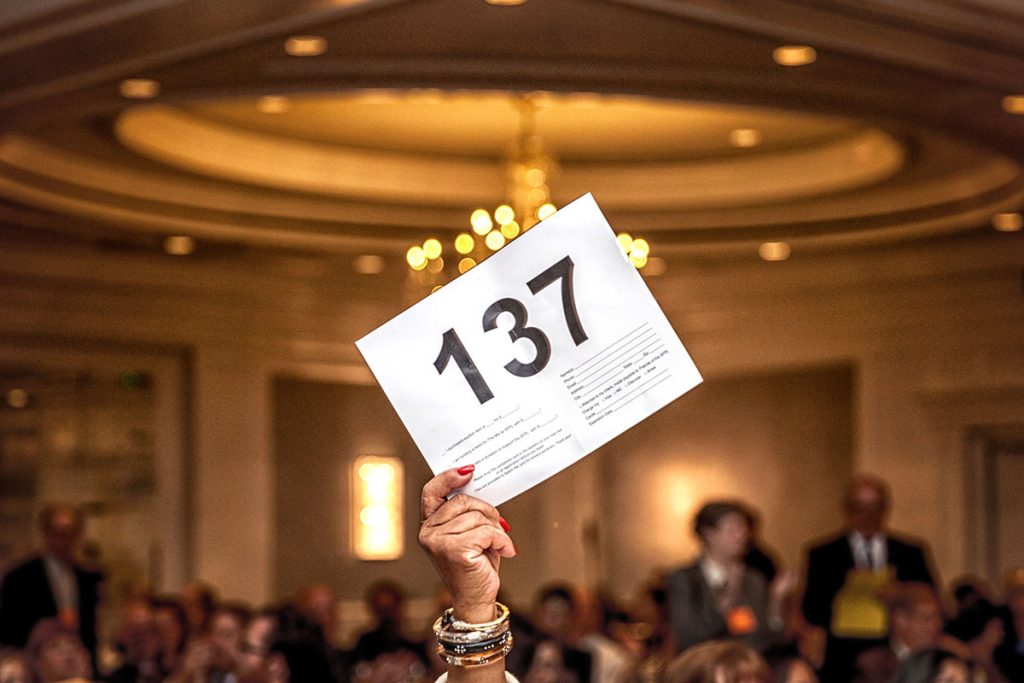
5. Timing Your Bids: The Importance of Patience
One of the most critical components of a successful bidding strategy is timing. Bidding too early or too aggressively can cause the price to escalate quickly, making the item unaffordable. Conversely, waiting too long can result in missing out on the item altogether. Striking the right balance is key to executing an effective strategy.
Key Points:
- Strategic Bidding: One effective strategy is to wait until the auction is nearing its conclusion before placing your bids. This allows you to observe how the bidding is progressing and avoid getting caught up in early bidding wars. In some cases, waiting until the last few seconds can allow you to place a “sniper” bid, securing the item at a competitive price.
- Bidding Increments: Pay attention to how the bidding increments increase as the auction progresses. Often, auction houses will set larger increments once a certain threshold has been crossed. At this point, you can gauge whether the competition is likely to slow down, or if it’s worth continuing to bid aggressively.
- Don’t Show Your Cards Too Early: If you’re bidding for a particularly sought-after item, try not to show your full hand too early. Bid in smaller increments to avoid alerting other participants to your serious interest in the item. Large jumps in your bid can signal to other bidders that you’re willing to pay more, prompting them to continue bidding beyond your limit.
6. Setting a Budget and Sticking to It
The most important aspect of any successful bidding strategy is discipline. It’s easy to get swept up in the excitement of the auction, but setting a firm budget and sticking to it is essential for making smart, strategic bids. Understanding pre-auction trends will help you gauge the market value of an item, but it’s important to remember that auctions can be unpredictable, and prices can quickly exceed expectations.
Key Points:
- Set a Maximum Bid: Before the auction begins, set a maximum price you’re willing to pay for the item. Include any additional fees, such as the buyer’s premium and taxes, into your budget to avoid unexpected surprises.
- Don’t Let Emotion Drive You: Bidding wars can easily become emotional, especially when you really want a particular item. Avoid the temptation to “win at all costs.” If the price exceeds your set budget, it’s important to walk away, no matter how tempting it may seem to continue bidding.
- Factor in Post-Auction Costs: Besides the hammer price, don’t forget about the additional fees that auctions often tack on, such as buyer’s premiums, shipping costs, and taxes. These can significantly increase the total cost of the item, so ensure you account for these in your overall budget.
Conclusion
In an auction, success is not just about the final bid amount but also about timing, strategy, and a deep understanding of pre-auction trends. By analyzing historical data, studying expert predictions, and understanding psychological triggers, you can enhance your bidding strategy and make more informed decisions. Pre-auction trends provide a roadmap for what to expect, allowing you to refine your approach and stay ahead of the competition. With discipline and insight, you can greatly improve your chances of winning your desired collectibles at the right price.


